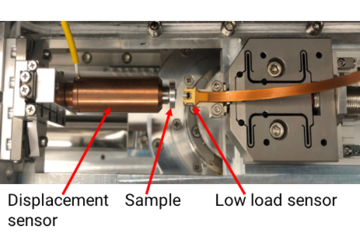All genres
121.
Journal Article
Temperature-driven phase transitions from first principles including all relevant excitations: The fcc-to-bcc transition in Ca. Physical Review B 84 (21), pp. 214107-1 - 214107-20 (2011)
122.
Journal Article
Designing shape-memory Heusler alloys from first-principles. Applied Physics Letters 99, pp. 191904-1 - 191904-3 (2011)
123.
Journal Article
First-principles study on the interaction of H interstitials with grain boundaries in alpha- and gamma-Fe. Physical Review B 84 (14), pp. 144121-1 - 144121-13 (2011)
124.
Journal Article
Methodological challenges in combining quantum-mechanical and continuum approaches for materials science applications. European Physics Journal Plus 126, pp. 101-1 - 101-22 (2011)
125.
Journal Article
Ab initio based determination of thermodynamic properties of cementite including vibronic, magnetic and electronic excitations. Physical Review B 84 (12), 125101 (2011)
126.
Journal Article
Growth process, characterization, and modeling of electronic properties of coupled InAsSbP nanostructures. Journal of Applied Physics 110 (4), pp. 043708-1 - 043708-6 (2011)
127.
Journal Article
Theoretical modeling of growth processes, extended defects, and electronic properties of III-nitride semiconductor nanostructures. Physica Status Solidi B 248 (8), pp. 1837 - 1852 (2011)
128.
Journal Article
Formation energies of point defects at finite temperatures. Physica Status Solidi B 248 (6), pp. 1295 - 1308 (2011)
129.
Journal Article
The influence of additions of Al and Si on the lattice stability of fcc and hcp Fe–Mn random alloys. Journal of Physics: Condensed Matter 23 (24), 246003 (2011)
130.
Journal Article
Role of spin quantization in determining the thermodynamic properties of magnetic transition metals. Physical Review B 83 (16), 165114 (2011)
131.
Journal Article
First-principles investigation of the effect of carbon on the stacking fault energy of Fe–C alloys. Acta Materialia 59, pp. 3041 - 3048 (2011)
132.
Journal Article
Determining the elasticity of materials employing quantum mechanical approaches: From the electronic ground state to the limits of materials stability. Steel Research International 82 (2), pp. 86 - 100 (2011)
133.
Journal Article
First-principles study of the thermodynamics of hydrogen-vacancy interaction in fcc iron. Physical Review B 82 (22), pp. 224104-1 - 224104-11 (2010)
134.
Journal Article
Ab initio study of thermodynamic, structural, and elastic properties of Mg-substituted crystalline calcite. Acta Biomaterialia 6 (12), pp. 4506 - 4512 (2010)
135.
Journal Article
Rescaled Monte Carlo approach for magnetic systems: Ab initio thermodynamics of bcc iron. Physical Review B 81 (13), pp. 134425 - 134434 (2010)
136.
Journal Article
Plane-wave implementation of the real-space k.p formalism and continuum elasticity theory. Computer Physics Communications 181 (4), pp. 765 - 771 (2010)
137.
Journal Article
Ab initio study on the solubility and kinetics of hydrogen in austenitic high Mn steels. (submitted)
138.
Journal Article
Thermodynamic properties of cementite (Fe3C). CALPHAD: Computer Coupling of Phase Diagrams and Thermochemistry 34, pp. 129 - 133 (2010)
139.
Journal Article
Polarization-induced charge carrier separation in polar and nonpolar grown GaN quantum dots. Journal of Applied Physics 106, pp. 083707-1 - 083707-7 (2009)
140.
Journal Article
The Effect of Disorder on the Concentration-Dependence of Stacking Fault Energies in Fe1-xMnx – A First Principles Study. Steel Research International 80 (9), pp. 603 - 608 (2009)











